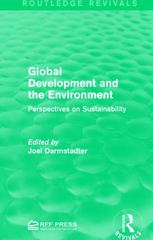Question
1. Perfect substitutes Consider a consumer whose utility equals the sum of their caffeine consumption. The consumer can obtain caffeine from either coffee or tea.
1. Perfect substitutes
Consider a consumer whose utility equals the sum of their caffeine consumption. The consumer can obtain caffeine from either coffee or tea. Coffee yields 4 units of caffeine, while tea yields 3 units of caffeine.
a) How do I draw an indifference curve for this consumer.
b) What is the consumer's optimal choice of tea and coffee when the relative price of tea and coffee, pt/pc is (i) 4/3, (ii) 3/4, or (iii) 2/4?
2. Optimal fencing
a) How to prove that a rectangle of fixed perimeter encloses the largest possible area when it is a square.
b) How to derive an expression for the Lagrange multiplier and interpret its meaning.
c) How to use the expression for the Lagrange multiplier to evaluate how the area of the fenced-in area will change if the perimeter of the fence increases from 500 to 501 feet. Assume that the fence designer behaves optimally and wants to maximize the area enclosed.
3. Evaluating quasi-concavity
a) Show that f(x, z) = x 12 z 14 is both concave and quasi-concave. Assume x > 0 and z > 0.
b) Show that f(x, z) = x 52 z54 is quasi-concave but not concave. Assume x > 0 and z > 0.
c) Show that the second-order conditions for obtaining a maximum will always be satisfied in the case of a consumer who maximizes a strictly quasi-concave utility function subject to a linear budget constraint. You can assume that utility is only a function of two goods.
4. Fuel Efficiency Individuals gain utility from vehicle miles traveled, v, vehicle safety, S, and some other good, x. Assume further that automobile safety is a decreasing function of fuel efficiency (miles per gallon, MPG). This is plausible as, ceteris paribus, making a car safer often requires the designer to add extra weight, reducing the fuel efficiency. Assume that consumers can choose the level of fuel efficiency they want for their car. The price of fuel is pg and the price of x is px. For the purposes of this problem, assume that there are no costs other than fuel costs associated with owning and operating the vehicle.
a) Set up the individual's utility maximization problem and derive the system of equations that describes the individual's optimal choice of v, MPG, and x.
b) Using this system of equations, explain in words the tradeoff individuals make when they choose vehicles with relatively high fuel efficiency.
c) Explain how you would derive a formal expression for how the demand for fuel efficiency responds to an increase in the price of gas. Can you put a sign on this price effect unambiguously? Explain your answer.
d) Now suppose that the U.S. government decides to regulate fuel efficiency standards in an effort to reduce CO2 emissions. Use your answer above to explain why mandated increases in fuel efficiency might not cause CO2 emissions to fall. You can assume that aggregate CO2 emissions are a linear function of fuel consumption.
Step by Step Solution
There are 3 Steps involved in it
Step: 1

Get Instant Access to Expert-Tailored Solutions
See step-by-step solutions with expert insights and AI powered tools for academic success
Step: 2

Step: 3

Ace Your Homework with AI
Get the answers you need in no time with our AI-driven, step-by-step assistance
Get Started


